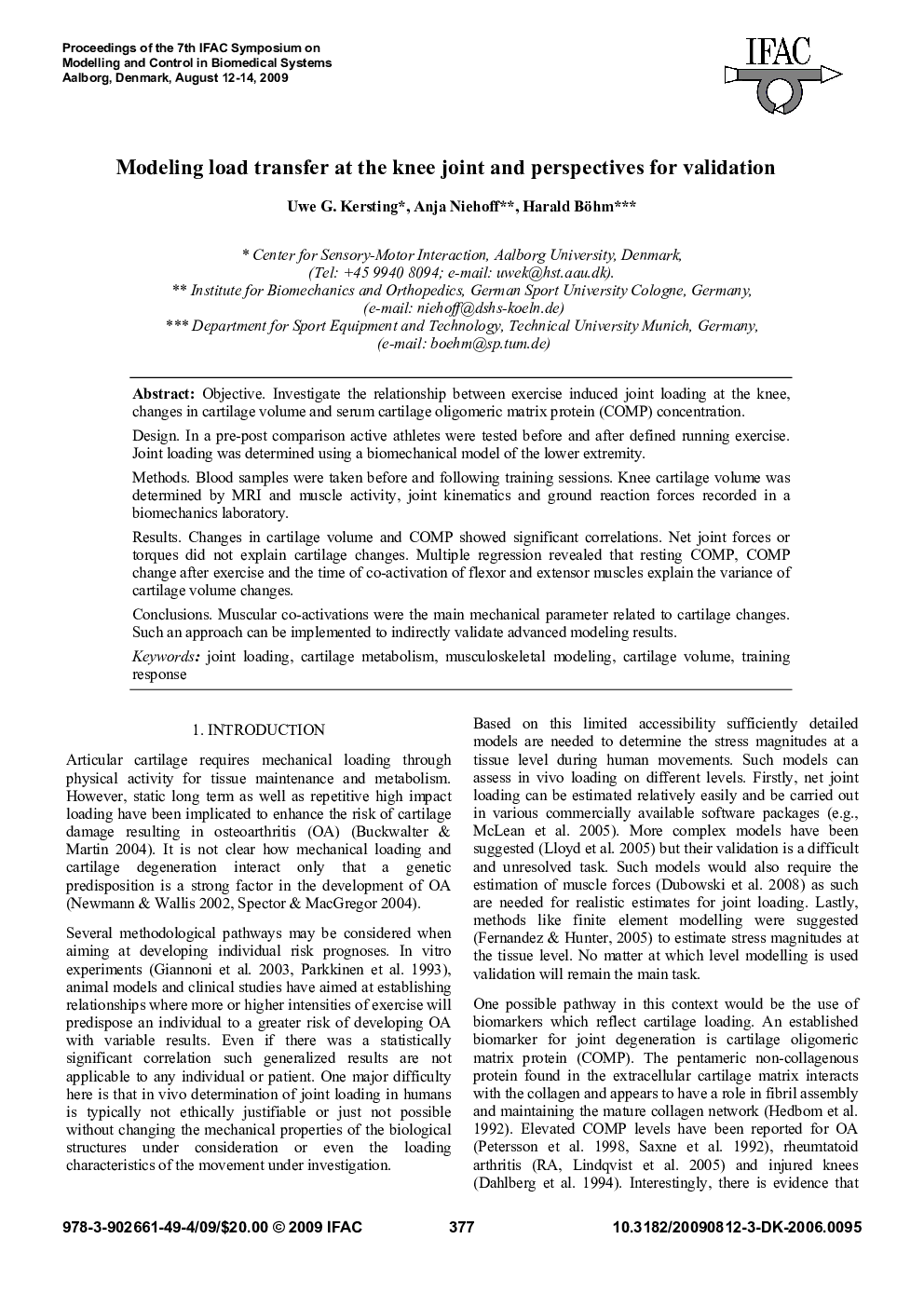| Article ID | Journal | Published Year | Pages | File Type |
|---|---|---|---|---|
| 719491 | IFAC Proceedings Volumes | 2009 | 6 Pages |
Objective. Investigate the relationship between exercise induced joint loading at the knee, changes in cartilage volume and serum cartilage oligomeric matrix protein (COMP) concentration.Design. In a pre-post comparison active athletes were tested before and after defined running exercise. Joint loading was determined using a biomechanical model of the lower extremity.Methods. Blood samples were taken before and following training sessions. Knee cartilage volume was determined by MRI and muscle activity, joint kinematics and ground reaction forces recorded in a biomechanics laboratory.Results. Changes in cartilage volume and COMP showed significant correlations. Net joint forces or torques did not explain cartilage changes. Multiple regression revealed that resting COMP, COMP change after exercise and the time of co-activation of flexor and extensor muscles explain the variance of cartilage volume changes.Conclusions. Muscular co-activations were the main mechanical parameter related to cartilage changes. Such an approach can be implemented to indirectly validate advanced modeling results.
